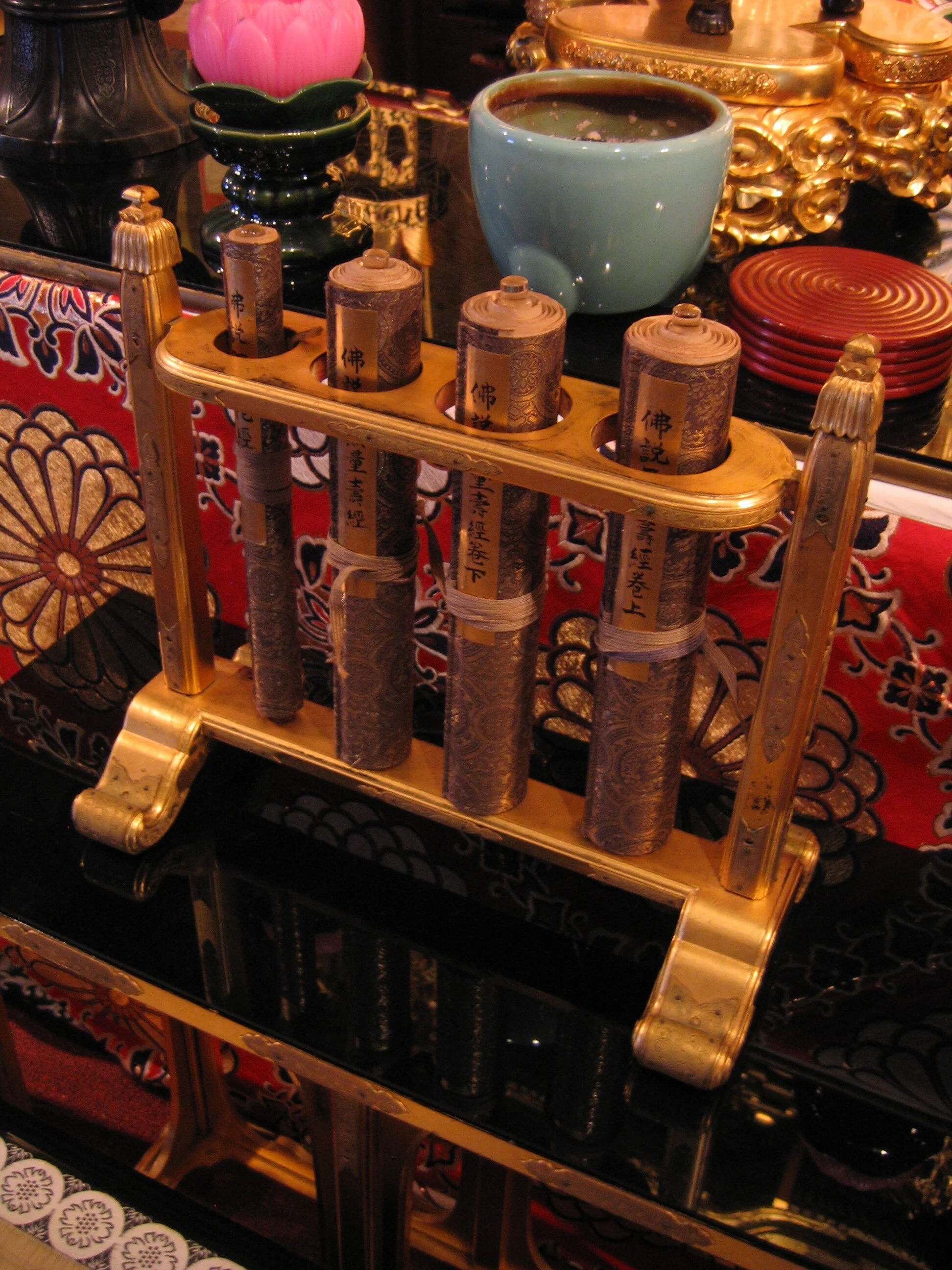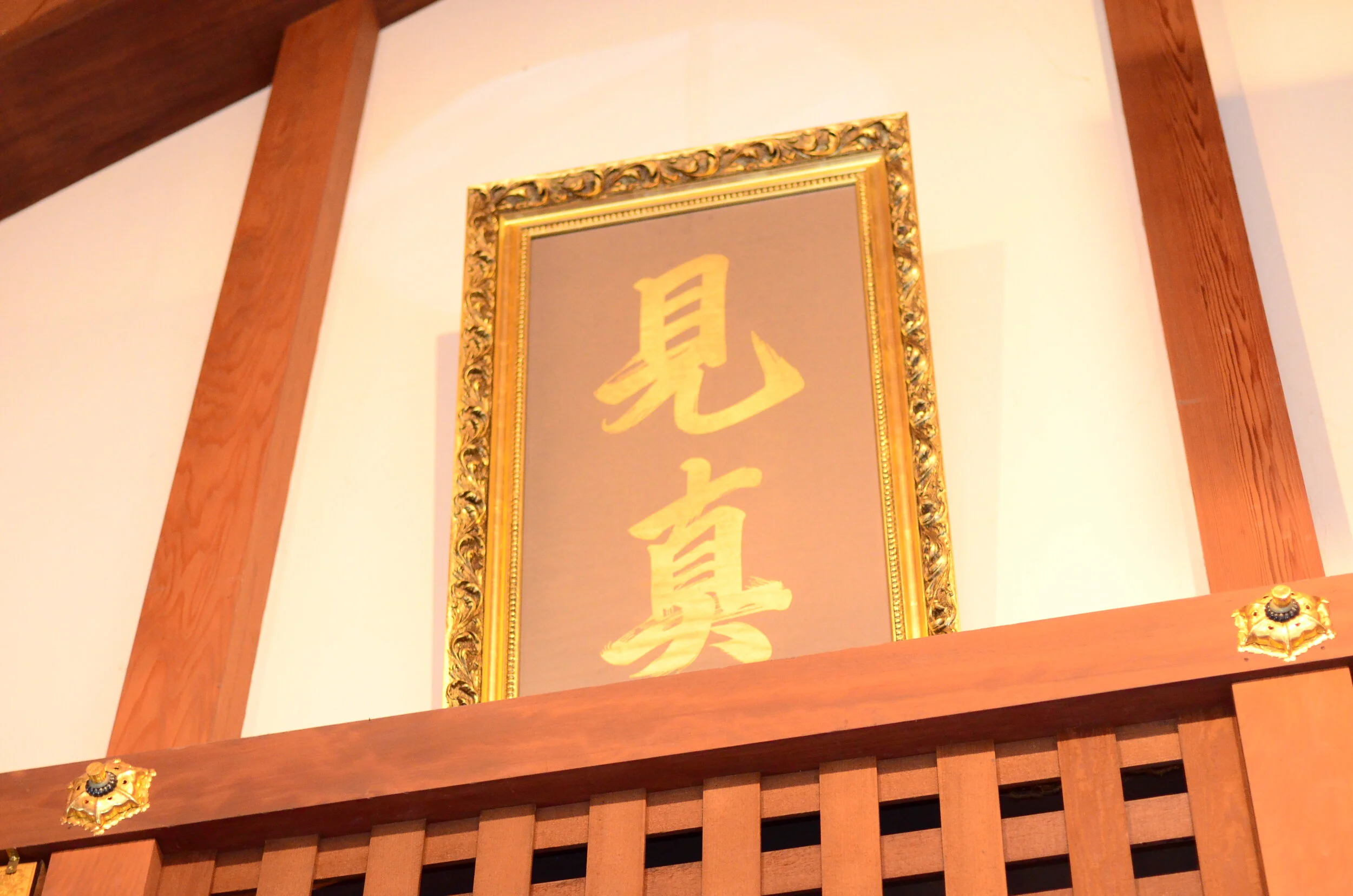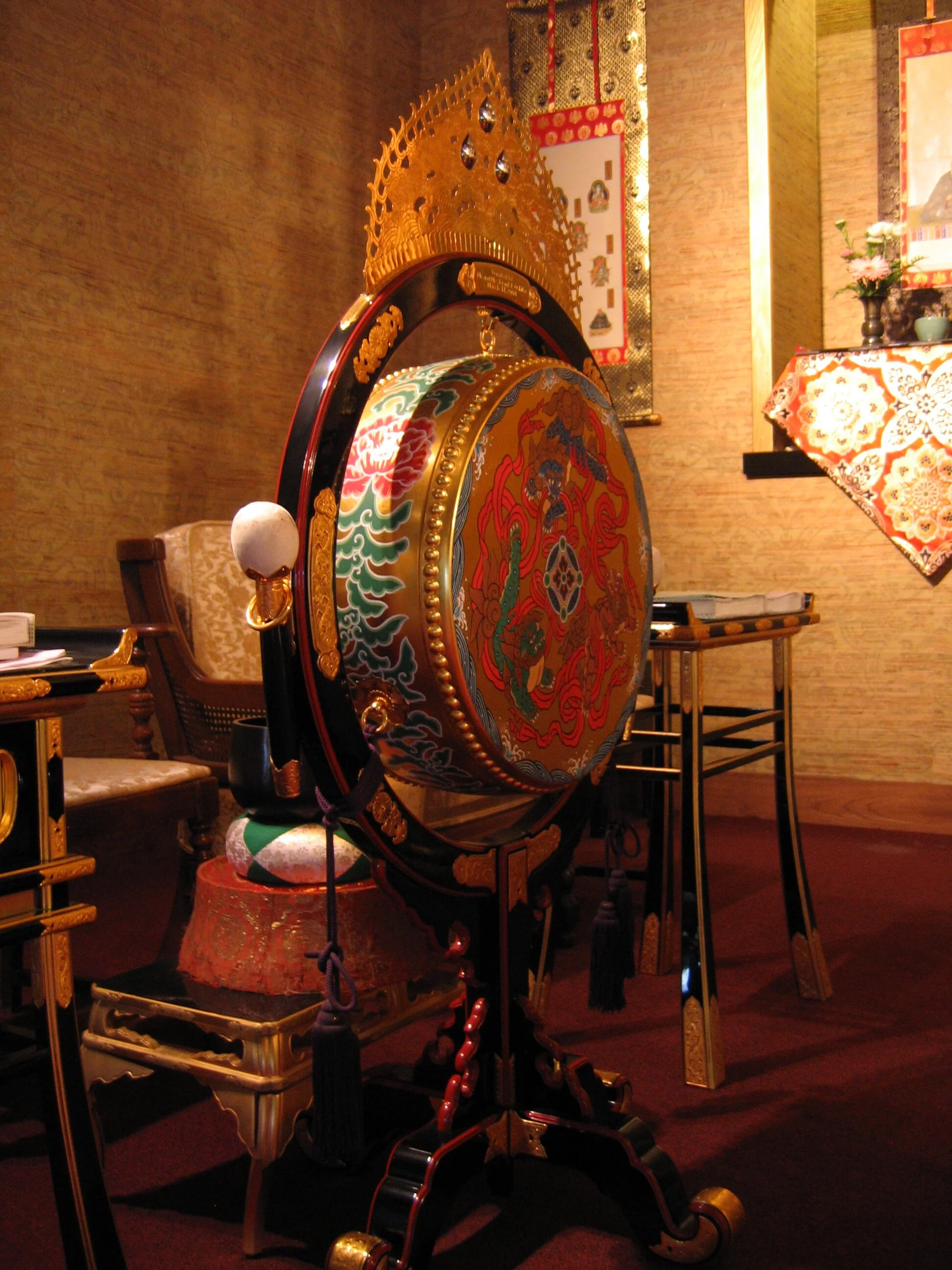"The uniqueness of the statue of Amida Buddha in our Pure Land tradition is the fact that Amida is always standing, not sitting, not lying down, which symbolizes the great compassion working constantly. If you have a chance to see the statue from the side, you will notice Amida leaning forward. That means the Buddha is always ready to come to you. Namoamidabutsu"
Reverend Orai Fujikawa
"仏像は色々あります。座っているもの、横になっているもの、思考中のものなどですが、浄土真宗の阿弥陀様は、いつでも立っていてくださり、知恵と慈悲をもって一人残らず必ず助けたいとの願いを表現したものであります。
合掌。なもあみだぶつ。"
釈往来







